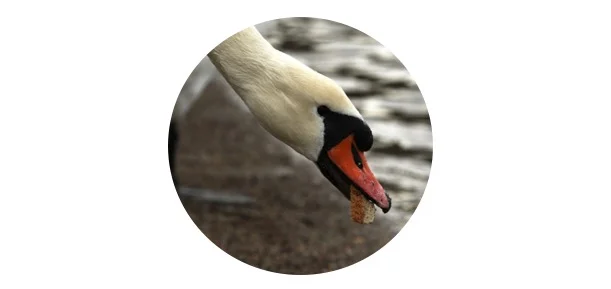Can Ducks Fly? All You Need To Know
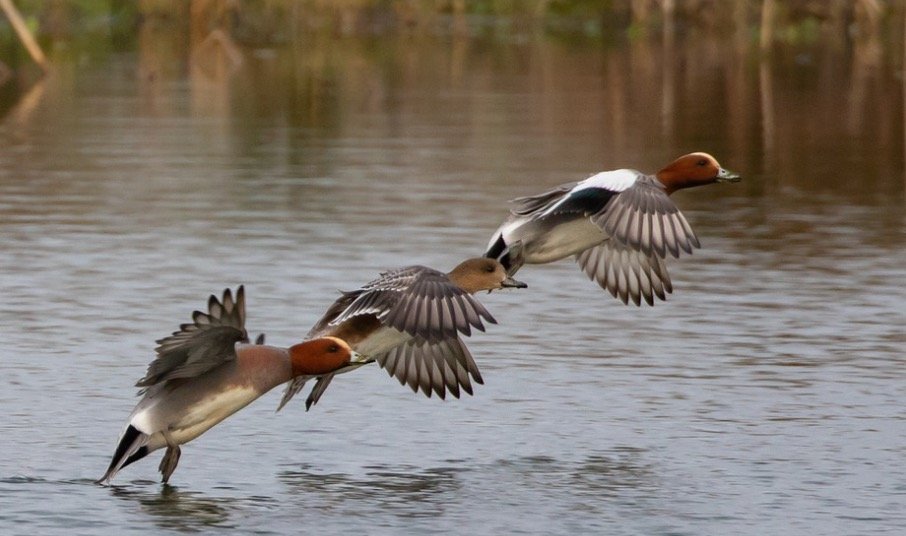
Table of Contents
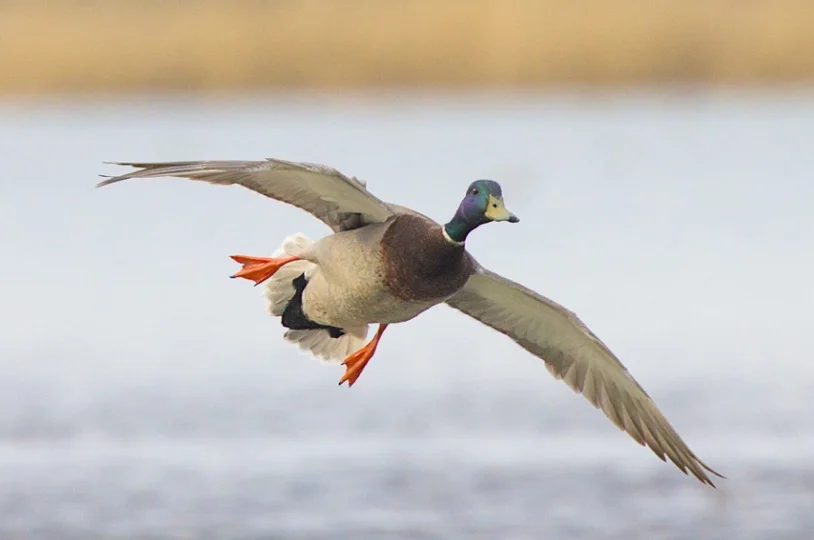
Can Ducks Fly?
Ducks, often known as water fowl, are lively aquatic avian that live in both saline water and fresh water. These birds belong to the Anatidae family, which includes swans and geese. Ducks are classified into three types, which are as follows:
- Dabbling ducks such as Mallards and Garganeys
- Diving ducks such as Pochards and Scaups
- Sea ducks such as Velvet Scoters and Red-breasted Mergansers
We know that ducks are more than proficient in water, but can ducks fly? Several duck breeds, especially when in migration, are good fliers. Whereas all ducks are born with the capacity to fly, many may be unable to or would prefer not to.
The Falkland Steamer duck is an example, for almost unable to fly, only flying small distances within the Falkland Islands. Size, weight, wing structure, condition, and surroundings are all factors that contribute to their incapacity to fly.
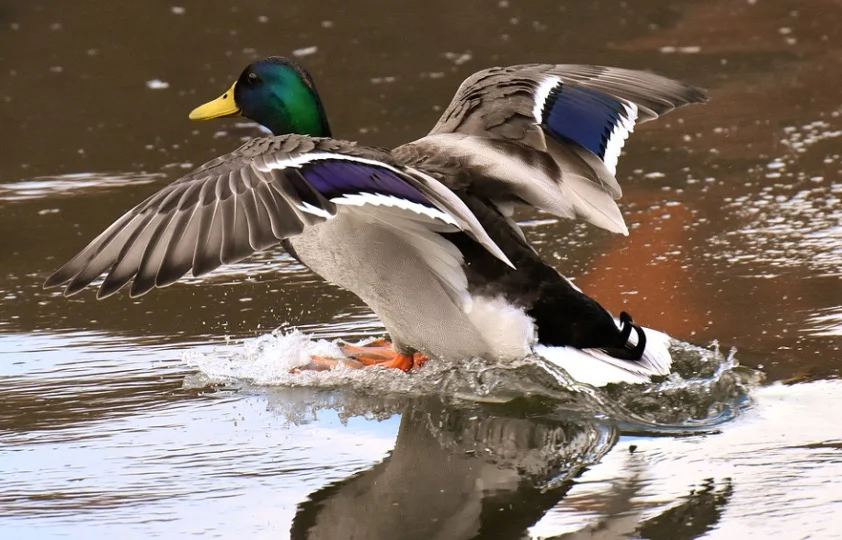
How do ducks fly?
Ducks’ wings are often curved and sharp, including some species having quite small wingspan in relation to its overall size. Ducks have the ability to fly large distances, especially during migration.
Regardless of wing size, they must flap virtually continually to keep their bodies afloat. The wing muscles of the great majority of migratory ducks are powerful.
Along with the bird’s wing coverts, Its massive primary flight feathers (which give power when swinging) and smaller secondary flight feathers (which provide lift during gliding) all contribute to the bird’s ability to fly.
The coverts are smoother than the fling feathers and provide a stiffness, flat surface for efficient flow of air, whilst the tail feathers serve as just a paddle, assisting in flight control and stability.
Ducks lose their flying feathers during the moulting season, for a month certain species are unable to fly. Domestic ducks that cannot fly include:
- Indian Runner Duck
- Pekin Duck
- Rouen Duck
- Cayuga Duck
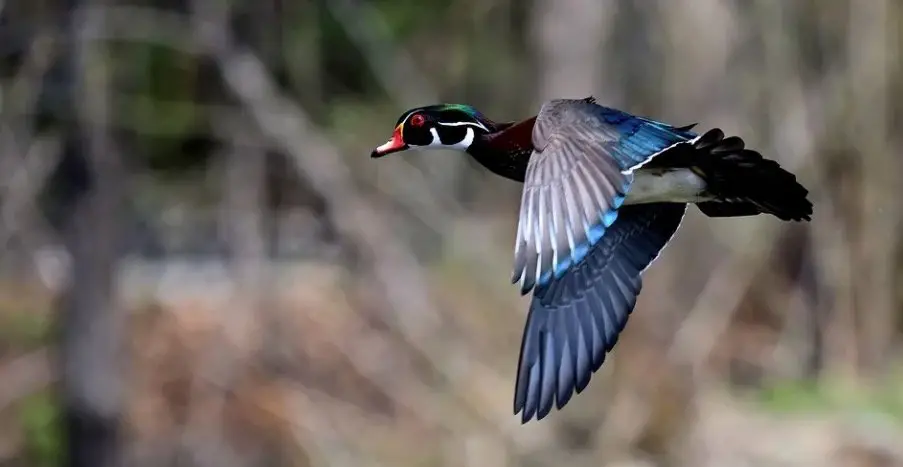
Why do ducks fly?
Ducks enjoy the same aquatic settings as any other bird, the water bodies like rivers, ponds, lakes, open seas, freshwater marshes, and bays. So, what motivates ducks to flee these regions and take to the skies?
Except for Antarctica, ducks may be found on every continent. Many migratory animals forsake their typical habitats because they cannot endure frigid weather.
They want to stay in the cold weather in hot climates where feed is plentiful as well as water seldom freezes. Some species travel to spawning areas. Mallard ducks, for example, move to the northern sections of their habitat in matched couples to establish their nest.
Once the female has placed her eggs, the male bird will usually depart the mating region to join other males in moulting grounds.
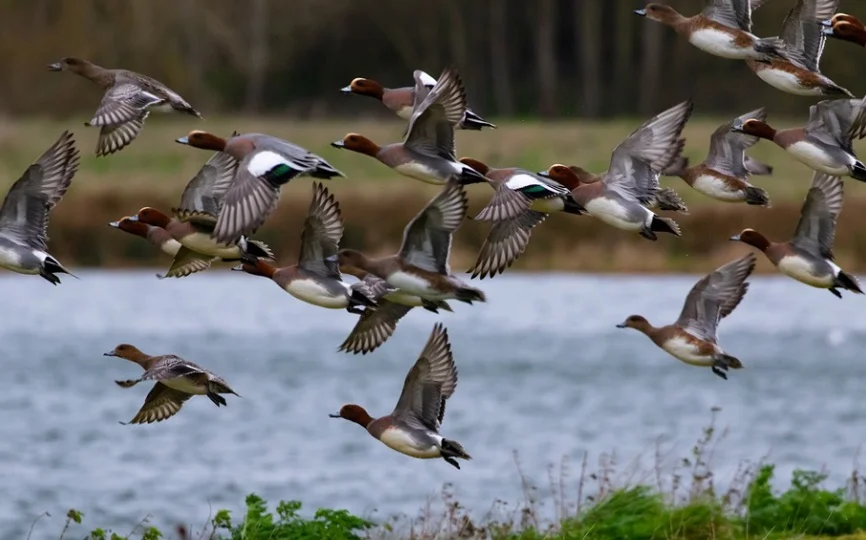
How high can ducks fly?
At migration, ducks would frequently flight at significantly higher levels to escape heat and water exhaustion. During migration, some species, such as mallards and ruddy shelducks, may reach heights of up to 22,000 feet.
Most birds fly at or below 500 feet in order to save energy and avoid predators such as hawks. A pintail skeleton was found about 16,400 ft in an Everest display. While documentation indicates that a jet planes flying above Nevada collided with a Mallard at 21,000 ft.
As a result, records like these demonstrate that certain species may reach high heights. The Mallard duck (Anas platyrhynchos) is a powerful flyer that can reach altitudes around 10,000 ft. and may reach altitudes of 200 to 4,000 ft. during migration.
Ruddy Shelducks (Tadorna ferruginea) possess powerful wings and can fly to altitudes of over 17,000 ft. During migration, they may reach elevations of up to 22,000 feet (6,800 metres), according to experts.
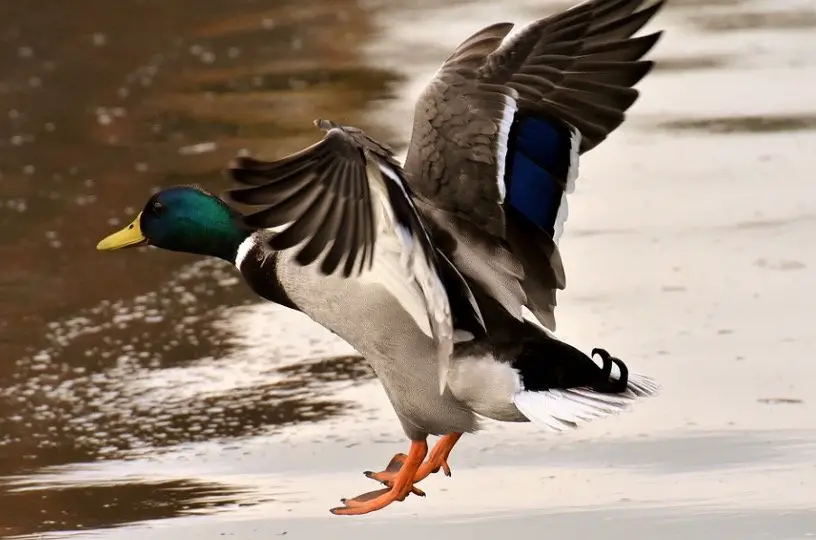
How fast can ducks fly?
The majority of ducks can move at speeds ranging from 40 to 60 mph, with an average speed of around 50 mph. The Eider is among the quickest duck species, with speeds reaching up to 60 mph.
The Red-breasted Merganser is the fastest duck in the world, capable of reaching speeds of up to 100 mph, outpacing the Cheetah, which can reach speeds of up to 70 mph.
How far do ducks migrate?
Birds migration is to avoid areas that are too cold for them or where food is in short supply. The distances that ducks travel during migration differ. Some go thousands of miles, while others take a leisurely journey of roughly 100 miles.
During migration, Mallards can fly for long distances, with documents indicating that they flew 800 miles continuously in 8 hours A Northern Pintail has been recorded flying 3,000 kilometres (1,864 miles) non-stop while in migration.
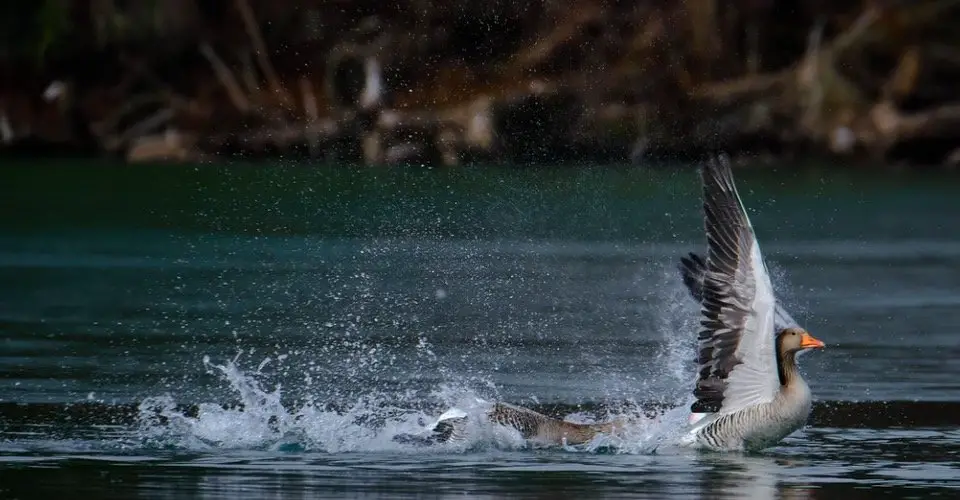
Can ducks take off without water?
Ducks, as we all understand, have the ability to soar out of water. Most animals can fly from ground or snow, but most are definitely higher proficient. If you had ever seen a diving duck? Including a Tufted duck, Pochard, or Goosander, begin to fly out of the water?
This is a nice scene to witness them sprint over the water, fiercely flapping their flaps to gain speed before the takeoff, Dabbling ducks, on the other hand, can lift off from the water rapidly, effectively, and virtually vertically!
Do ducks fly at night?
Waterfowl migration takes place largely during night, such activities commencing soon after sundown, increasing in the midnight, and then declining. In general, many animals become substantially highly active during night. Animals like to scavenge for food at night. This might be because of shifting environmental circumstances and the need to avoid attacks.
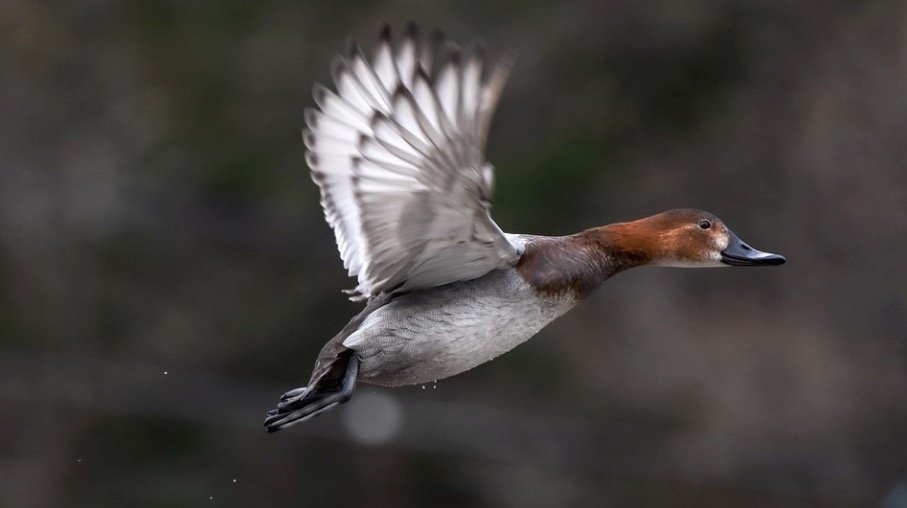
Do ducks fly in the rain?
We’ve often heard of the phrase “pleasant climate for ducks.” however, do our beloved pets really fly once it rains? Ducks will fly in light drizzle or gusts of wind.
Can ducks fly backwards?
Except the hummingbird, which can fly backwards and upside down, ducks, like many other birds, could only fly forward.
Do ducks fly in a formation?
During migration, a group of ducks flying in a V configuration is a typical sight. When flying in formation, the birds can conserve energy and exert less effort. The group is led by the leader, each bird is somewhat higher than the one in front of it.
The timing of wingbeats is critical while flying in this configuration. Swirling air streams from the wing tips of each bird as it flaps, and its upward airflow produced lets every bird should preserve power and have a free flight.
The birds immediately start leading the group, which keeps them from being tired. During the beginning of the breeding season, ducks may do ‘three bird flights.’ This is usually an experienced couple, followed by one single drake looking for a sexual relationship.
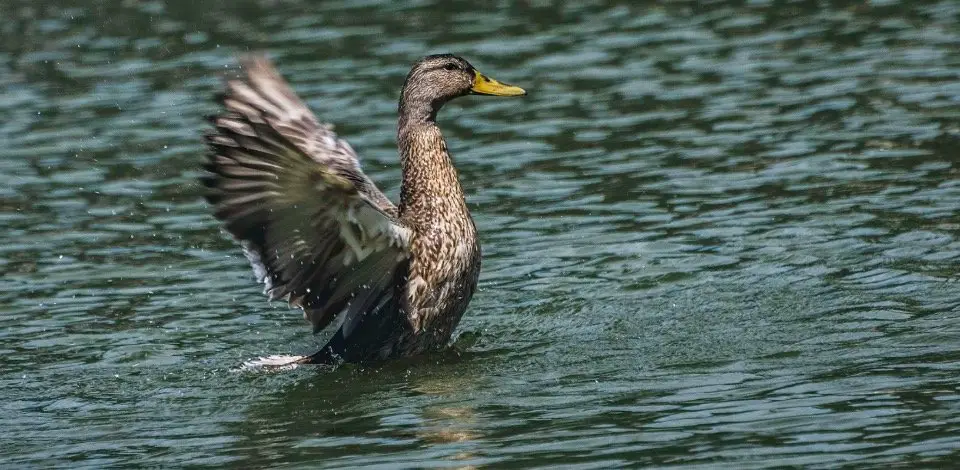
Can baby ducks fly?
Between the ages of 50 and 60 days, baby ducks achieve independence and fledge. Until then, they are still under their mother’s care and control.
Can Mallard duck fly?
Mallard ducks are capable flyers with wingspan ranging from 75 to 100 cm, it has a top speed of 55 mph. Their wingspan is strong, sharp, and somewhat larger than diving duck wings. Birds have the ability to lift off virtually vertically and instantly out from water.
Can Runner duck fly?
Indian Runner ducks are a household variety related to the Mallard duck. Because of their upright and bottle-shaped bodies, they are often referred to as Penguin ducks, and the legs are positioned rather far backward over their torso, allowing them to sprint rather than waddle. Indian Runner ducks cannot fly, yet they could leap three foot high fences if they feel threatened.
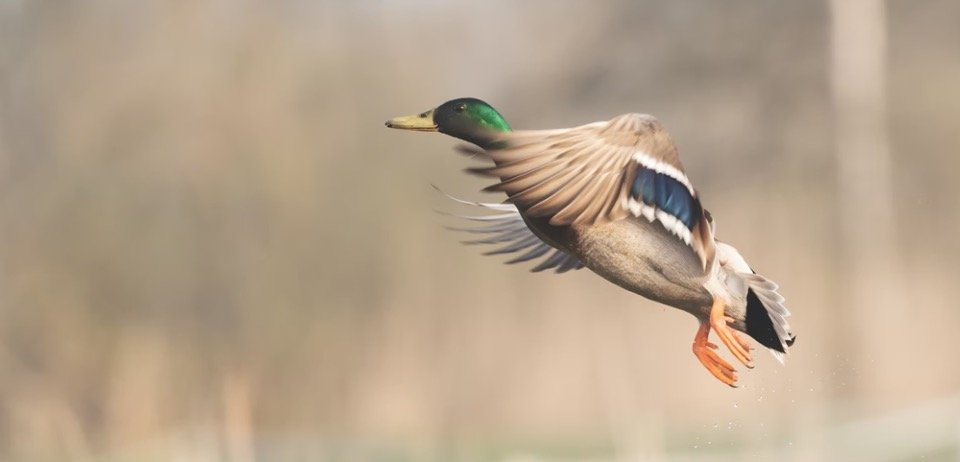
Can Pekin duck fly?
Pekins seem to be large, robust birds those are social and energetic. They are a flightless household breed, descended out from Mallard duck. Certain ducks that are lighter could be capable of flying for a small distance.
Can domestic ducks fly?
Due to their physical form, bulk, & size, domestic ducks are unable to fly. Domestic duck breeds, except the Muscovy duck, are descended from the Mallard.
- Duck
- Indian Runner
- Campbell
- Khaki
- Pekin
- Rouen
- Cayuga
Some farm duck breeds make excellent pets or may be maintained in a safe setting, such as a backyard or home. If feasible, a small pool or paddle pond would be ideal for the duck, since they like paddling and splashing about in the water.
Farm ducks had long been featured in children’s picture books and animation, rendering them well-known and famous among some of us. Jemima Puddleduck, an Aylesbury duck with a tall vertical body, white feathers, a pinkish beak, and orange feet and legs, was a very renowned white duck created by Beatrix Potter.
Walt Disney’s Donald Duck, his three nephews Huey, Dewey, and Louie, his fiancée Daisy, and his uncle Scrouge McDuck are all ducks that resemble the American Pekin duck. Warner Brothers’ Daffy Duck was another well-known duck that resembled the American black duck.
